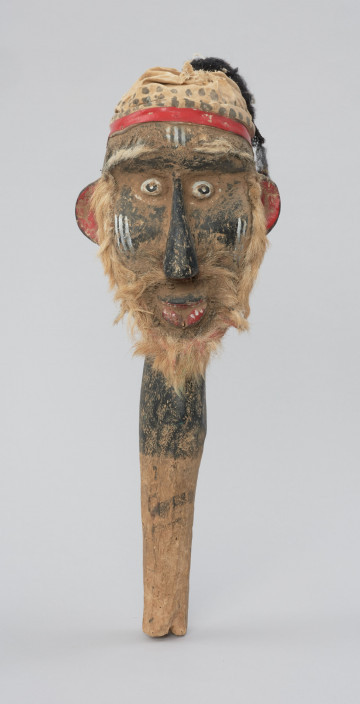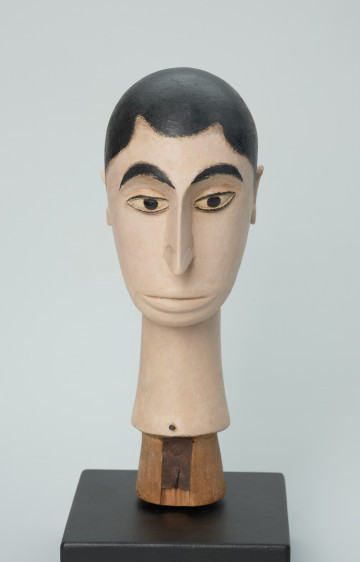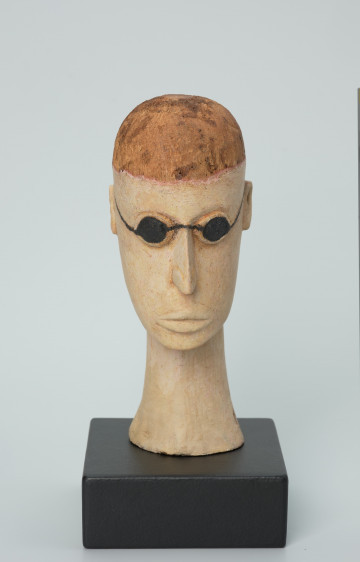
Theatre puppet - Bozo fisherman
między 1951 — 1969
National Museum in Szczecin
Part of the collection: Dolls from the sogo bò theater
The theatrical puppet (English: marionette, French: marionnette) of the maani type is animated from below. It can play on a so-called mobile stage or independently. It is part of the Sogo bò theatrical tradition from the Ségou region, in the south-central part of the Republic of Mali. It represents the figure of a goddess, as evidenced by the white colour with which it has been painted. The peoples of the interior Niger Delta associate white with positive attributes: purity, truth, peace, happiness, beauty, intelligence, abundance and sacrifice. Sogo bò is characterised by a great variety of theatrical forms. Characteristic of the Ségou area is the so-called mobile stage, i.e. a bamboo or wooden cuboid-shaped structure covered with fibres and coloured fabrics of a size that allows two or three men to hide inside. On the front of this construction, wood-carved animal heads (sogo kun) are placed, as well as representations of mythical or fantastic figures. The back and the head of the creature are stages that feature small puppets (puppets) animated from below called maani. Malian theatre also features large puppets set in motion by a puppeteer hidden inside them, which can represent animals and humans. They are made up of wood-carved heads (sometimes busts), which the puppeteer puts on his head or shoulders, hiding the rest of his body under fabrics and fibres. They differ from the mobile stage by the absence of other small puppets. Large puppets representing human figures may have hands attached to the body, animated with strings and wires, or sculpted separately and held directly by the dancer. Dolls depicting animals usually move their heads, jaws, ears and tails.The gift from Oleńka Darkowska-Nidzgorska and Denis Nidzgorski-Gordier.
Ewa Prądzyńska
Author / creator
Dimensions
cały obiekt: height: 94 cm, width: 14,4 cm
Object type
puppet
Creation time / dating
Creation / finding place
Identification number
Location / status

między 1951 — 1969
National Museum in Szczecin

między 1901 — 1950
National Museum in Szczecin

między 1901 — 1950
National Museum in Szczecin
DISCOVER this TOPIC
Castle Museum in Łańcut
DISCOVER this PATH
Educational path